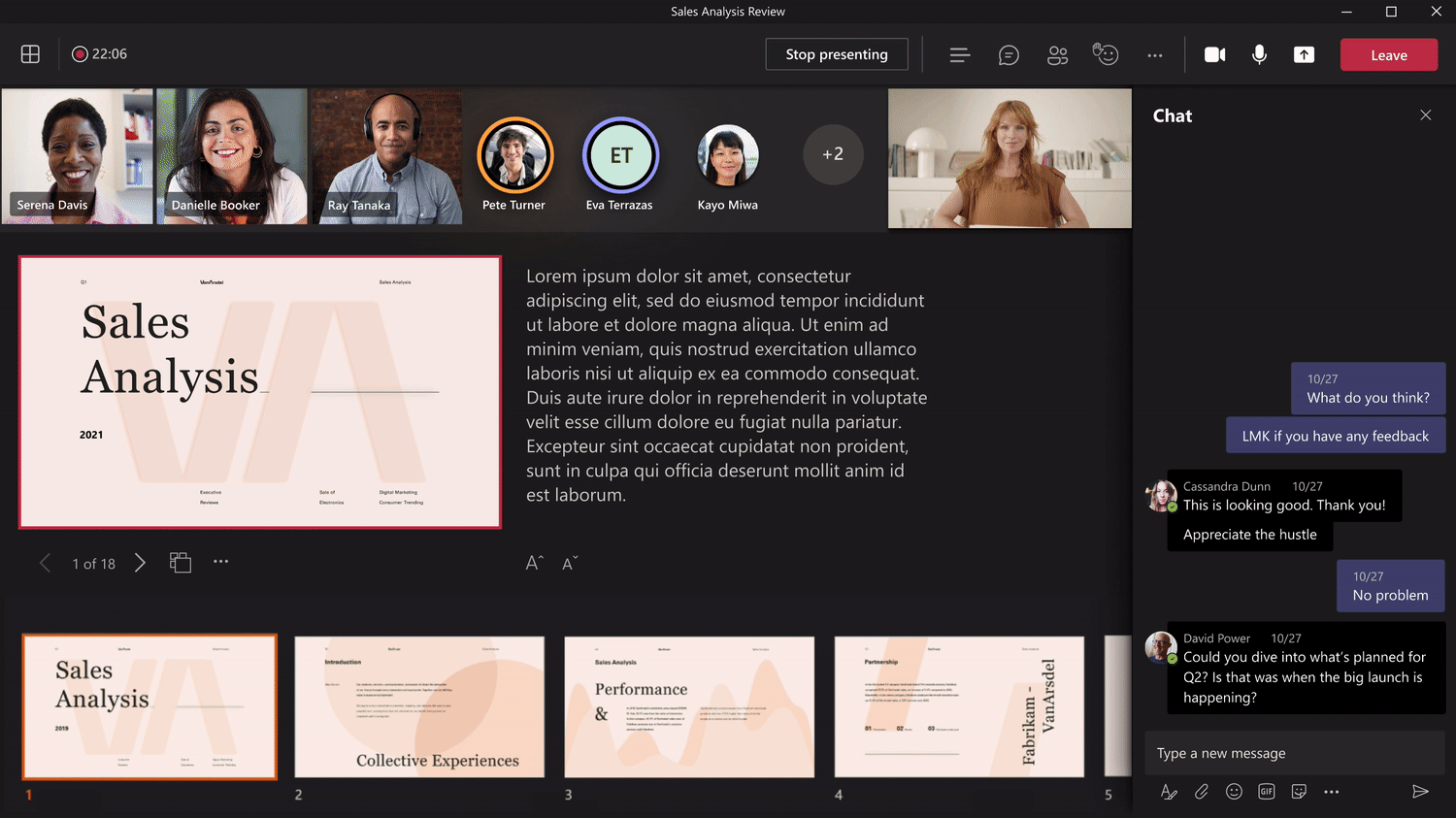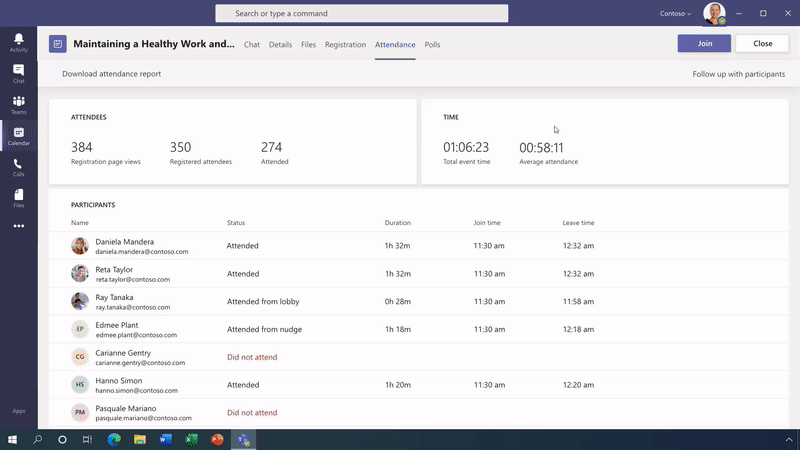The ability to hold Webinars for up to 1,000 attendees has been added to Microsoft Teams for all UConn faculty, staff, and students. With Webinars, users can deliver presentations to meetings of all sizes, ranging from small internal collaborations to large external events1,000 attendees with full interactivity, plus broadcast to up to 10,000 attendees with a view-only experience. Creating a webinar is as simple as setting up a Teams meeting with extra functionality, such as which includes custom registration pages, more presentation options, and the ability to disable attendee chat.
PowerPoint Live Compatibility
To create a more polished presentation, Microsoft has deeply integrated Teams with PowerPoint Live. This enables you to view upcoming slides, notes, the meeting chat, and the audience in a single view while presenting your Webinar.
As a presenter, Teams provides you three different options to customize how you appear to the audience: Standout mode, Reporter mode, and Side-by-side mode. Standout mode shows the speaker in front of the PowerPoint; Reporter mode shows the content above the speaker's shoulder, like a news broadcast; and Side-by-side mode shows the presenter's video alongside their presentation.
Engage following the Webinar
After the event ends, easily access attendee information to bring into your customer relationship management (CRM) applications for lead management and follow-up. Furthermore, Webinars integrates with Microsoft Dynamics 365 Marketing so that users can export attendee data directly from Teams to create campaigns and customer journeys for ongoing nurture streams.
What are Webinars?
Webinars are very similar to a Teams Meeting, but with several key differences in functionality. When booking a regular Teams Meeting, you can directly invite many UConn users to speak and collaborate at once. When booking a Webinar in Teams, you instead directly invite a handful of presenters. Then, after customizing your Webinar registration form, you are given a URL to send to all potential attendees via email, listserv, etc. The attendees can then fill out the form with all requested information, which is collected in a downloadable excel file.
When the time of the Webinar arrives, attendees are able to join directly through their email or through their calendar entry.
While Webinars are similar to standard Teams Meetings and Live Events, there are several key differences that make them work best in different scenarios. Here is an outline on how they compare to one another.
Why use Webinars?
When creating a Webinar, there are several new tools that set it apart from a normal Teams Meeting. When presenting a Webinar, presenters are able to disable the microphone and camera for attendees. Disabling the microphone prevents attendees from enabling their microphone, as shown below.
...
The presenter's ability to disable the attendee's microphone and camera is listed among additional tools by right clicking on an attendee during the meeting.
...
Since Webinars can include up to 1,000 users with full functionality, the ability to disable attendee microphones is essential.
Related Articles
| Filter by label (Content by label) | ||||||||||
|---|---|---|---|---|---|---|---|---|---|---|
|
...
|
| Page Properties | ||
|---|---|---|
| ||
|


